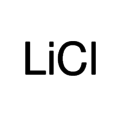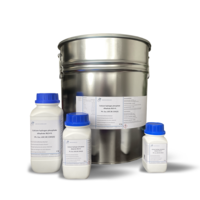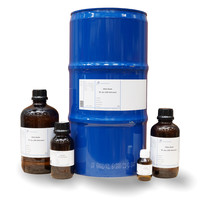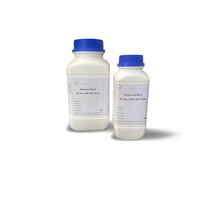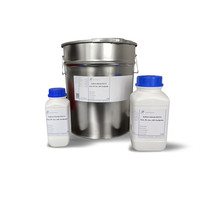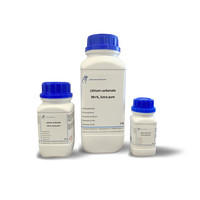You have no items in your shopping cart
Lithium Chloride 99+% Extra Pure
- Buy 6 and save 5%
What is Lithium Chloride?
Lithium chloride LiCl, the lithium salt of hydrochloric acid, forms colorless, highly hygroscopic crystals. In addition to the anhydrous lithium chloride, there are also various hydrates.
What is lithium chloride used for?
Lithium chloride can be used to make lithium. For this purpose, a mixture of lithium chloride and potassium chloride is used in a melt-flow electrolysis. Due to its strong hygroscopic effect, it can be used as a desiccant and also for dehumidifying rooms. It can also be used as a flux in soldering and welding technology. Due to its hygroscopicity, it can be used in dew point sensors or hygrometers. The electrical conductivity of the salt is highly dependent on the water concentration, hence the ambient humidity can be determined from the conductivity of the lithium chloride. Lithium chloride can be used as a tracer in chemical or geological research. Lithium chloride can be used in thawing solutions. However, because these are corrosive, they are banned for use in aircraft in the US, for example. The textile industry also uses lithium chloride. Lithium chloride solutions with 25-30% LiCl can be used in cold baths. Such cold baths can remain liquid down to -70 ° C.
Technical information:
Empirical formula LiCl
Molar mass (M) 42.40 g/mol
Density 2.07
Boiling point (bp) 1360 °C
Melting point (mp)615°C
Solubility: 830 g/l (H2O, 20 °C)
WCS 1
CAS No.[7447-41-8]
EC-No. 231-212-3
Downloads
$$$$$
Hazard statements
H302 Harmful if swallowed
H315 Causes skin irritation
H319 Causes serious eye irritation
Precautionary statements
Precautionary statements - prevention
P280 Wear protective gloves/eye protection
Precautionary statements - response
P302+P352 IF ON SKIN: Wash with plenty of soap and water
P305+P351+P338 IF IN EYES: Rinse cautiously with water for several minutes. Remove contact
lenses, if present and easy to do. Continue rinsing





